Related Research Articles

"Snow White" is a German fairy tale, first written down in the early 19th century. The Brothers Grimm published it in 1812 in the first edition of their collection Grimms' Fairy Tales, numbered as Tale 53. The original German title was Sneewittchen; the modern spelling is Schneewittchen. The Grimms completed their final revision of the story in 1854, which can be found in the 1857 version of Grimms' Fairy Tales.

Colleen Doran is an American writer-artist and cartoonist. She illustrated hundreds of comics, graphic novels, books and magazines, including the autobiographical graphic novel of Marvel Comics editor and writer Stan Lee entitled Amazing Fantastic Incredible Stan Lee, which became a New York Times bestseller. She adapted and did the art for the short story "Troll Bridge" by Neil Gaiman, which also became a New York Times bestseller. Her books have received Eisner, Harvey, Bram Stoker, Locus, and International Horror Guild Awards.
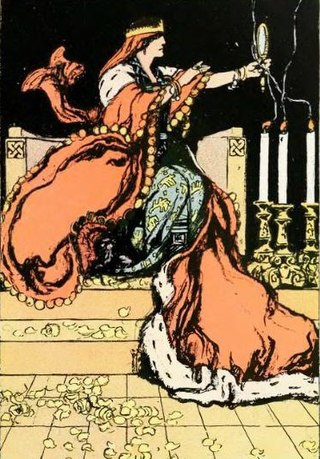
The Evil Queen, also called the Wicked Queen or the Queen, is a fictional character and the main antagonist of "Snow White," a German fairy tale recorded by the Brothers Grimm; similar stories exist worldwide. Other versions of the Queen appear in subsequent adaptations and continuations of the fairy tale, including novels and films. One particularly notable version is Disney's depiction, sometimes known as Queen Grimhilde. The character has also become an archetype that inspired unrelated works.

The 10th Kingdom is an American fairytale fantasy miniseries written by Simon Moore and produced by Britain's Carnival Films, Germany's Babelsberg Film und Fernsehen, and the US's Hallmark Entertainment. It depicts the adventures of a young woman and her father after they are transported from New York City, through a magical mirror, into a parallel world of fairy tales.
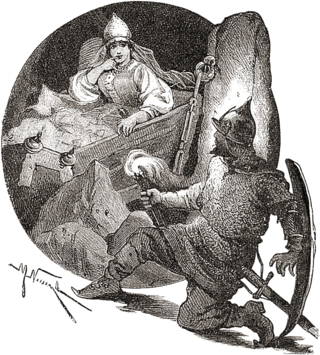
The Tale of the Dead Princess and the Seven Knights is an 1833 poem by Aleksandr Pushkin telling a fairy tale of Prince Yelisei's search for his love, the Tsarevna (princess), who has been cast out by her stepmother.
The Charmings is an American fantasy sitcom that follows Snow White and Prince Charming, awakened from a thousand-year spell, as they adjust from their familiar life in the enchanted forest to the modern ways of 20th century Los Angeles suburbs. The series originally aired from March 20, 1987, to February 11, 1988, on ABC.

The Legend of Snow White is an Italian-Japanese anime series produced by Tatsunoko Productions and Mondo TV based on the 1812 European fairy tale. Directed by Kunitoshi Okajima, the series premiered on NHK on 6 April 1994 and ran for 52 episodes until its conclusion on 29 March 1995.

Snow White: The Fairest of Them All is a 2001 fantasy adventure television film co-written and directed by Caroline Thompson and produced by Hallmark Entertainment. The film was first released theatrically in Europe, and subsequently aired in the United States on ABC as part of their series on The Wonderful World of Disney on March 17, 2002.
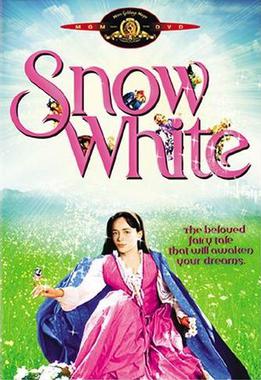
Snow White is a 1987 American musical fantasy film based on the classic 1812 fairytale and released as part of the "Cannon Movie Tales" series. The film was released straight to video. In August 2005 it was released on Region 1 DVD by MGM.

Snow White is a fictional character and a main character from Walt Disney Productions' first animated feature film Snow White and the Seven Dwarfs (1937). She was originally voiced by Adriana Caselotti. The character of Snow White was derived from a fairy tale known from many countries in Europe with the best-known version being the 1812 tale collected by the Brothers Grimm.

Snow White and the Seven Dwarfs is a 1955 West German film, directed by Erich Kobler, based on the 1812 story of Schneewittchen by the Brothers Grimm.
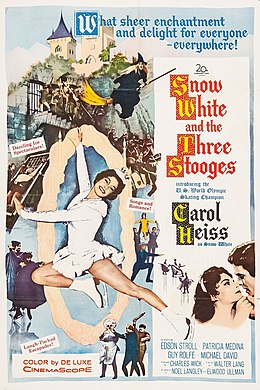
Snow White and the Three Stooges is a 1961 American comedy fantasy film. It is the second feature film to star the Three Stooges after their 1959 resurgence in popularity. By this time, the trio consisted of Moe Howard, Larry Fine, and "Curly Joe" DeRita. Released by 20th Century Fox, this was the trio's take on the classic fairy tale Snow White. The film was retitled Snow White and the Three Clowns in the United Kingdom. This was Walter Lang‘s final directing film before his retirement.

Märchen is the seventh story CD, released by the fantasy symphonic rock band Sound Horizon on December 15, 2010, through King Records. The normal edition debuted No. 3 and peaked No. 2 on the Oricon weekly albums chart. A limited edition sold over 40,000 copies in its first two days, 24,816 copies on the first day and 15,833 copies on the next.

Mirror Mirror is a 2012 American fantasy comedy film based on the fairy tale, "Snow White", collected by the Brothers Grimm. The film follows a young princess named Snow White, who uses the help of a band of seven thieves as well as a prince, to reclaim her throne from her wicked stepmother, the enchantress Clementianna.

Snow White & the Huntsman is a 2012 American fantasy film based on the German fairy tale "Snow White" compiled by the Brothers Grimm. The directorial debut of Rupert Sanders, it was written by Evan Daugherty, John Lee Hancock and Hossein Amini, from a screen story by Daugherty. The cast includes Kristen Stewart, Charlize Theron, Chris Hemsworth, Sam Claflin, and Bob Hoskins in his final film performance. In the film's retelling of the tale, Snow White grows up imprisoned by her evil stepmother, Queen Ravenna, a powerful sorceress. After Snow White escapes into the forest, Ravenna enlists Eric the Huntsman to capture her, but he becomes her companion in a quest to overthrow Ravenna.
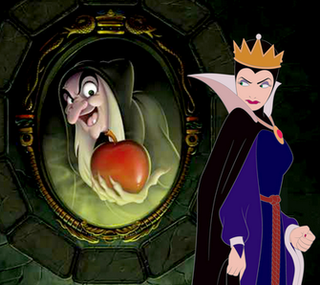
The Evil Queen, also known as the Wicked Queen, Queen Grimhilde, or just the Queen, is a fictional character who appears in Walt Disney Productions' first animated feature film Snow White and the Seven Dwarfs (1937) and remains a villain character in their extended Snow White franchise. She is based on the Evil Queen character from the 1812 German fairy tale "Snow White".
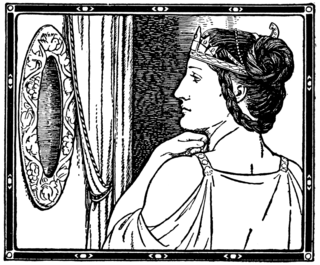
The Magic Mirror is a mystical object that is featured in the story of Snow White, depicted as either a hand mirror or a wall-mounted mirror.
Snow White is a Disney media franchise that began in 1937 with the theatrical release of Snow White and the Seven Dwarfs. It is based on the 1812 fairy tale by the Brothers Grimm.

Snow White and the Seven Dwarfs is a 1938 picture book written and illustrated by Wanda Gág and published by Coward-McCann. Snow White and the Seven Dwarfs was a Caldecott Medal Honor Book in 1939. The book is a twist on the classic tale of Snow White by the Brothers Grimm. Since then it has been republished several times, including in 1999, 2004, and 2013.
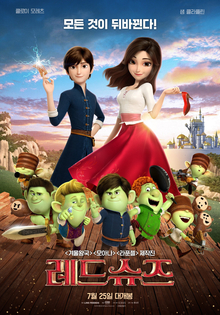
Red Shoes and the Seven Dwarfs, known in Korean as simply Red Shoes, is a 2019 English-language South Korean animated fantasy film produced by Locus Corporation. It is based on the 1812 German-language fairy tale "Snow White" by the Brothers Grimm, and its name is derived from the 1845 Danish fairy tale The Red Shoes by Hans Christian Andersen. The film features the voices of Chloë Grace Moretz, Sam Claflin, Gina Gershon, Patrick Warburton, and Jim Rash.
References
- ↑ Gaiman, Neil (1999). Smoke and Mirrors. London: Headline Book Publishing. p. 32. ISBN 978-0-7553-2283-1.
- ↑ Gaiman, Neil (1998). Smoke and Mirrors: Short Fictions and Illusions. p. 43. Retrieved 19 October 2019.
- ↑ "Snow, Glass, Apples - Bedlam Theatre".
- ↑ "Snow, Glass, Apples HC :: Profile :: Dark Horse Comics". www.darkhorse.com. Dark Horse Comics. Retrieved 19 October 2019.
- ↑ "Eisner Awards Current Info". Comic-Con International: San Diego. San Diego Comic Convention. 24 July 2020. Archived from the original on 7 June 2017. Retrieved 31 July 2020.
- ↑ "32nd Annual Will Eisner Comic Industry Awards". YouTube. San Diego Comic Convention. 24 July 2020. Retrieved 31 July 2020.
- ↑ "2019 Bram Stoker Awards Winners". Bram Stoker Awards . Retrieved 5 June 2020.